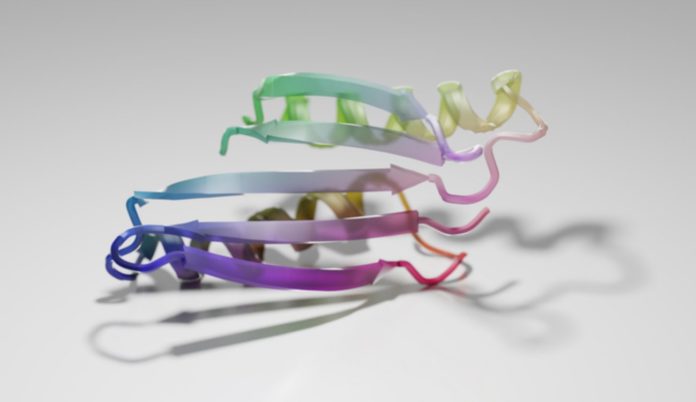Artificial intelligence can now be used to produce new proteins, just as it can be used to make convincing photos of cats.
In a new paper, published today, researchers explain the development of a unique neural network that “hallucinates” proteins with new, stable structures.
Proteins fold spontaneously into complicated three-dimensional forms. Proteins are string-like molecules found in every cell. Nearly every biological process, including cellular formation, DNA repair, and metabolism, relies on these folded structures.
Protein structures, on the other hand, are challenging to investigate due to their intricacy. Computers are frequently used by biochemists to anticipate how protein strings, or sequences, will fold. Deep learning has transformed the accuracy of this work in recent years.
“For this project, we made up completely random protein sequences and introduced mutations into them until our neural network predicted that they would fold into stable structures,” says co-lead author Ivan Anishchenko.
“At no point did we guide the software toward a particular outcome,“ Anishchenko further adds, “These new proteins are just what a computer dreams up.”
The researchers anticipate that in the future, they will be able to direct artificial intelligence to manufacture new proteins with useful properties.
“We’d like to use deep learning to design proteins with function, including protein-based drugs, enzymes, you name it,” adds co-lead author Sam Pellock.
Two thousand new protein sequences were developed by the research team, which included scientists from UW Medicine, Harvard University, and Rensselaer Polytechnic Institute (RPI). Over a hundred of them were created in the lab and investigated.
A closer look at three of these proteins revealed that the geometries predicted by the algorithm were actually achieved in the lab.
“Our NMR [nuclear magnetic resonance] studies, along with X-ray crystal structures determined by the University of Washington team, demonstrate the remarkable accuracy of protein designs created by the hallucination approach”, says co-author Theresa Ramelot, a senior research scientist at RPI in Troy, New York.
Professor of chemistry and chemical biology at RPI, Gaetano Montelione, was one of the co-authors, says:
“The hallucination approach builds on observations we made together with the Baker lab revealing that protein structure prediction with deep learning can be quite accurate even for a single protein sequence with no natural relatives. The potential to hallucinate brand new proteins that bind particular biomolecules or form desired enzymatic active sites is very exciting.”
“This approach greatly simplifies protein design,” adds senior author David Baker, a professor of biochemistry at the UW School of Medicine who received a 2021 Breakthrough Prize in Life Sciences.
“Before, to create a new protein with a particular shape, people first carefully studied related structures in nature to come up with a set of rules that were then applied in the design process. New sets of rules were needed for each new type of fold. Here, by using a deep-learning network that already captures general principles of protein structure, we eliminate the need for fold-specific rules and open up the possibility of focusing on just the functional parts of a protein directly.”
“Exploring how to best use this strategy for specific applications is now an active area of research, and this is where I expect the next breakthroughs,” concludes Baker.
Source: 10.1038/s41586-021-04184-w
Image Credit: IAN C. HAYDON/UW MEDICINE INSTITUTE FOR PROTEIN DESIGN
You were reading: A neural network taught to predict protein structures can also create new ones, says study
